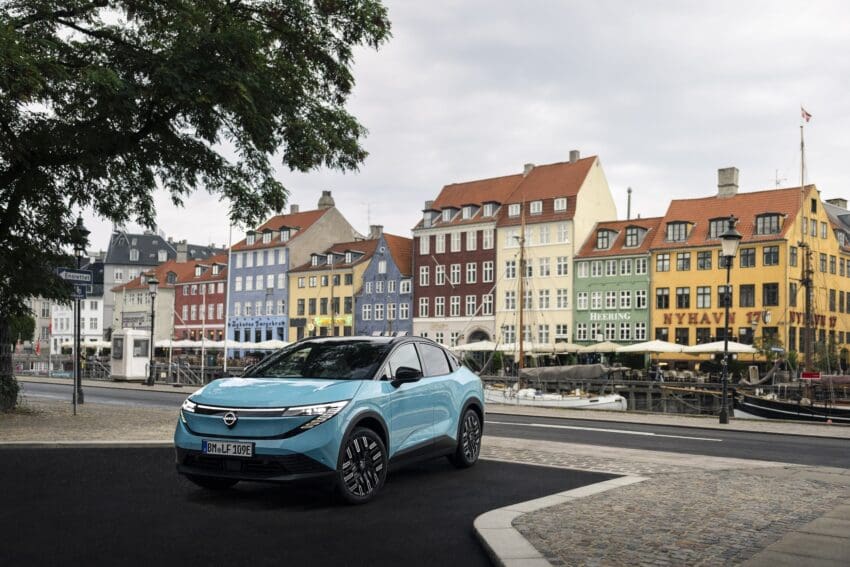
Nissan Leaf 2026 review: Back to the future
In recent years, the Nissan Leaf lost serious ground to newer, more advanced rivals. Can this all-new version compete with the very best of the C-segment EVs?
When the Nissan Leaf launched in 2010, it turned the automotive landscape on its head. It showed that all-electric cars need not be particularly expensive, inefficient, or weird looking. Yet as time rolled on and EVs became more mainstream, the Leaf gen 1.5 and 2 became gradually outdated, to the extent that in 2024, production was stopped at its Sunderland factory in England’s north east.
Thankfully, though, the Leaf is not dead. And in Dear Old Blighty, where not a day seems to go by without stories of woe in the news, this all-new for 2026 version will also be built at the Sunderland plant. Yet in addition to being a job saver, there’s a bit more to the shiny new Leaf.

While the excellent new Nissan Micra is a re-skinned version of the equally-excellent Renault 5, the new Leaf – despite sharing its platform with the also brilliant Scenic E-Tech – is largely a solo effort from Nissan. There’s much riding on the Leaf’s shoulders, too – it needs to show that Nissan can go toe-to-toe with the likes of the equally-superb Scenic, the Kia EV3 Skoda Elroq, and the Volvo EX30 in the hotly-contested EV B/C-segment.
To discover whether Nissan has turned a new leaf as it seeks to go all-electric by 2030, we head to one of the coolest cities in Europe to find out… Copenhagen.
Nissan Leaf 2026 design, interior, and technology
Designed at Nissan’s Global Design Studio in Atsugi, Japan, the new Leaf looks like none of its predecessors. Gone are both the parrot fish-esque aesthetic of the first-gen car, and the anonymity of its successor.
Instead, Nissan has turned the 2026 Leaf into an aerodynamically-driven crossover with a drag co-efficient of 0.25Cd making it the most slippery Leaf yet. It’s also quite tall at 1.5 metres and the middle of that sloping bonnet stands taller than my hips. Granted, that’s not particularly difficult.
Overall, the design is very much an exercise in Japanese minimalism. It incorporates some ’90s design elements without crossing into being retro and looks very much like a Nissan if you get what I mean. Like the Toyota C-HR and Skoda Enyaq SUV, the rear C-pillar is an extremely attractive piece of car design, as it cascades into a flicked up tail.

The rear of the 2026 Nissan Leaf is easily the most unique feature of the car. The lights either side of the blacked out rear panel house two curiously-shaped bulbs. The light housing the two 3D bulbs closest to the panel mean ‘ni’ or ‘two’ in Japanese. The three on the extremities mean ‘three’ or ‘san’ in Japanese. No points for guessing what that means. The design of the two lights was also inspired by one of Nissan’s coolest offerings ever – the 300ZX.
Inside, the latest Leaf brings together the latest tech with an airy, lounge-like functionality. It’s very sensible and logical in that way Japanese of the ’90s and early 2000s were. The two sizeable 14.3-inch displays run on the Google-based Android Automotive and while not the sharpest in terms of graphics, everything functions without lag. In fact, the brains behind the 2026 Nissan Leaf pride themselves on the system making life easier for the driver.
The Leaf’s Google-based OS automatically finds charging stops en-route and even tells you how busy the chargers are. While new for the brand, it’s what Tesla was doing 10 years ago. As well as its in-built Google system, the Leaf has Apple CarPlay and Android Auto. Yet given how good the in-built Google system is, more than one colleague said they would happily use that instead of CarPlay or Auto.

Throughout the test drive’s workshop sessions, Nissan says it has sought to listen to customer feedback. Being 2025, physical buttons have been a talking point in the car’s development. Nissan, happily, has added at least 40 to the cabin with physical controls for the radio and my personal favourite, four large P R N D buttons for the gear selector. To switch between drive modes – Eco, Normal, Sport, and Personal – there’s a single switch. The same can be said for e-drive or single pedal drive mode.
Undoubtedly, this level of accessibility is part of Nissan’s drive to retain its existing customer demographic as well as branching out into a new one.
Around the car, there are more than 10 hidden two and three-bar ‘ni’ and ‘san’ logos. It’s a nice touch like the ‘trees’ you’d earn from driving more greenly in the first-gen car and shows Nissan can indeed let its hair down. As a colleague noted, “that could also help keep your kids busy when charging”.

When it came to packaging the 2026 Leaf, Nissan moved the battery and standard fit heat pump to the back of the car to free up – what was in earlier cars – a notoriously tight front end. Yet while the front part of the cabin is now rather spacious, this now has come at the expense of rear capacity. If, for the billionth time you needed reminding, I am by no means tall at 5’10”. Yet my legs felt cramped in the rear, and given that sloping crossover roofline down to the boot, nobody over my height is sitting comfortably. Or at all.
Another point of irritation is the ADAS system. It’s easy to turn off via a shortcut down by the driver’s door, but the in-built speaker in the driver’s headrest for the direction call outs is an absolute distraction. Despite what Bose says, the rest of the car can hear it.
To end this section on a positive note… regarding that boot, Nissan’s been smart here. There’s 437 litres of boot space with under-floor storage space. Open that second-tier, and there is third area for charging cables and the likes.
Battery, motor and powertrain
Nissan offers the new Leaf with two choices of battery: a 75kWh unit returning a WLTP-estimated 386 miles of range, and a smaller 52kWh unit returning 271 miles from a single charge. Both are mated to a front-mounted motor producing 215bhp and 174bhp respectively.
The smaller of the two batteries has a fast-charging speed of 105kW, and the larger 150kW. Nonetheless, both take less than 30 minutes to charge from 20-80% and share the same 3.1kW vehicle-to-load charging speed.
Given its lineage, the Nissan Leaf isn’t a difficult drive. The steering is light irrespective of driving mode, and a soft suspension ensures it soaks up the roads of rural Denmark and the bumps of central Copenhagen. Nissan’s one-pedal driving system or ‘e-Pedal’ came in handy around the achingly cool Danish capital, too.

The steering is also extremely light, making tight twists and turns a doddle. Don’t get me wrong, this is not a car to hoon. Not unless Nissan makes a twin-motor Nismo version, anyway. I also found that while slightly firmer than some higher-riding rivals, it doesn’t wallow as much in corners. Adding to an almost surefootedness are the supportive plasti… sorry, ‘vegan leather’ seats – 60% of which are made from renewables.
Out of town, the Nissan Leaf rides equally as comfortably on motorway and remains as accessible as ever. The in-built Google navigation didn’t get us lost (that was my job!) and the lounge-like cabin added to the car’s overall nice character and being designed around making EV ownership as easy as possible. Most importantly, that 386-mile range from the 75kWh battery rendered any form of range anxiety non-existent.
Nissan Leaf 2026 price and specification
Nissan offers the new Leaf in four trim levels, Engage , Engage+, Advanced , and our car, the range-topping Evolve mode with a 75kWh battery. All bar the Engage trim come swith the integrated Google system.

Nissan has yet to announce exact trim level pricing for the 2026 Leaf range, and the same goes for the battery combinations. Nonetheless, brand representatives remain confident that it will qualify for the full UK Government Electric Car Grant when order books open in December this year.
Verdict
The 2026 Nissan Leaf isn’t a gamechanger like the original car. Yet it very much corrects the ship, and proves Nissan can make a modern EV capable of tackling the best in its ultra-competitive segment. Most impressive of all, is how simple everything is to use. Nissan cites this ease-of-use as a learning from the original car, and it very much succeeds in carrying it over to this latest version.

In fact, with its physical switchgear, class-leading range, and simple handling, I’d very much recommend this latest Leaf to anyone looking for a first EV. Nissan has retained everything beloved of the original, but bought it firmly into the future.
Nissan Leaf Evolve
- Price: £36,000
- Powertrain: Single-motor, front-wheel-drive
- Battery: 75kWh
- Power: 215 bhp
- Torque: 261 lb ft
- Top speed: 99mph
- 0-62mph: 7.7 seconds
- Range: 386 miles
- Consumption: 4.5 miles / kilowatt hour
- Charging: 150kW





